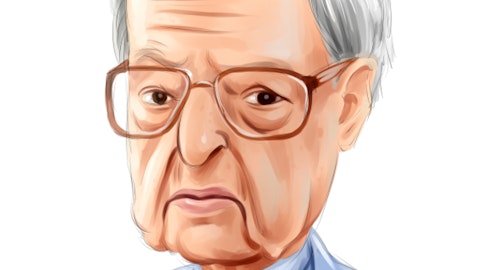Schlumberger Limited. (NYSE:SLB), the largest public American oilfield equipment and services company, has been seeing big benefits from the boom in oil and gas drilling in the onshore U.S. Last quarter its revenue was 11% higher than in the third quarter of 2011, helping drive its earnings up by 9%. According to the company, growth occurred both in reservoir characterization and in drilling operations. Looking at the first three quarters of 2012, net income is up 15% from the same period a year ago, though due to higher receivables cash flow from operations has been roughly unchanged.
Schlumberger’s stock price is actually down 2% year to date, bringing its market capitalization to $91 billion. With earnings rising- at least for now, as it’s likely that drilling activity will eventually plateau- the trailing P/E multiple for the giant market leader sits at 17. Wall Street analyst expectations are for a 19% earnings growth rate over the next several years, with their projections implying a forward P/E of 14 and a five-year PEG ratio of 0.9. We might not be that optimistic, but it’s certainly tough to see the company as overvalued and Schlumberger Limited. could easily justify its stock price even if it does disappoint the Street going forward.
Andreas Halvorsen’s Viking Global more than doubled the size of its position in Schlumberger Limited. during the second quarter of the year; according to our database of 13F filings, the Tiger Cub and his team controlled a total of 8.9 million shares (find more stocks that Viking Global liked). Fisher Asset Management, managed by billionaire Ken Fisher, owned about 8 million shares at the end of June- this placed the value of its holdings at over $500 million (research other stocks that Fisher Asset Management has $500 million invested in). At the beginning of April, Lee Ainslie’s Maverick Capital had not owned any shares but the fund then initiated a position of 2.6 million shares by the end of June (see more of Lee Ainslie’s stock picks).
Halliburton Company (NYSE:HAL) is Schlumberger’s closest peer. At a $30 billion market cap it is considerably smaller, but still obviously a large and well-capitalized company. Its earnings were actually 12% lower in the third quarter than a year ago off of higher revenue, but with its stock price declining so far in 2012 as well, it is considerably cheaper on a multiples basis: it trades at 10 times trailing earnings and forward earnings estimates. Sell-side analysts think that the same trends that will power Schlumberger’s earnings numbers higher will be felt here as well: its five-year PEG ratio is actually even lower, at 0.7, in addition to its more immediate and historical multiples being lower. At first glance, it seems to us like a better buy.
We can also compare Schlumberger to National-Oilwell Varco, Inc. (NYSE:NOV), Baker Hughes Incorporated (NYSE:BHI), and Weatherford International Ltd (NYSE:WFT). These stocks also trade at large discounts relative to Schlumberger: for example, their forward P/E multiples are 11, 11, and 8, respectively. In Weatherford’s case, this reflects particularly high expectations from analysts as that company trades at 25 times its trailing earnings, but its top and bottom lines have been rising particularly rapidly, so this is perhaps appropriate and we’d like to look at the company more closely. The trailing P/Es at the other two companies are even at 13x, but over the medium term National Oilwell Varco is expected to see slightly higher growth rates (though both have five-year PEG ratios less than 1, signifying that based on analyst expectations they are undervalued). Baker Hughes has actually been seeing considerably lower net income, so we’d probably avoid that pick, but we can’t help but conclude that National Oilwell Varco as well as Halliburton look like good buys, both on an absolute basis and relative to Schlumberger.
There’s a certain appeal to owning a market leader, and we take that into consideration. In this case, however, Schlumberger trades at such a high premium that we’d advise looking at its peers instead.






